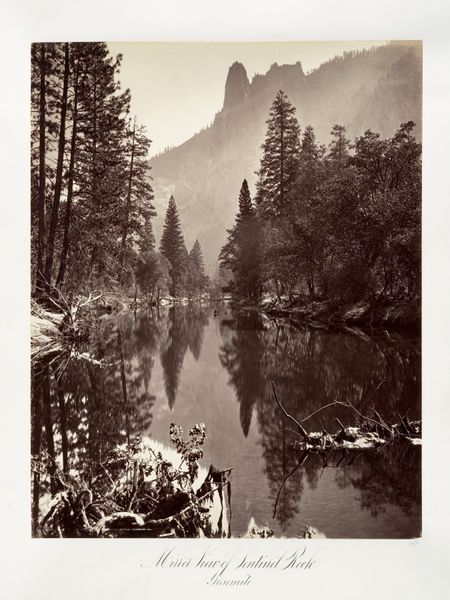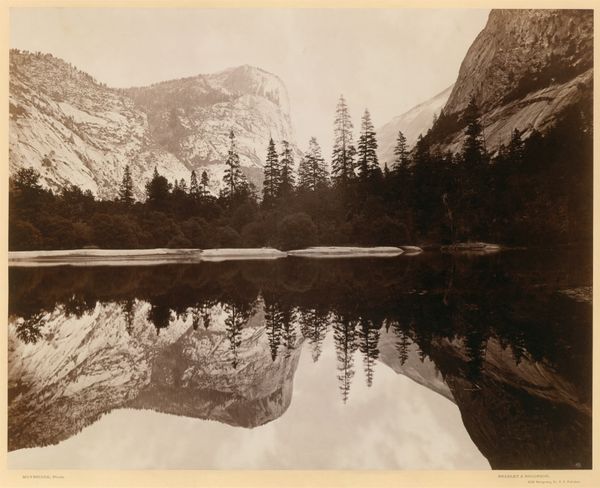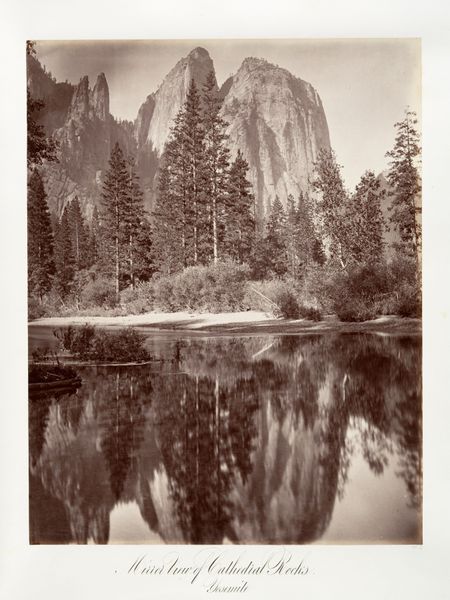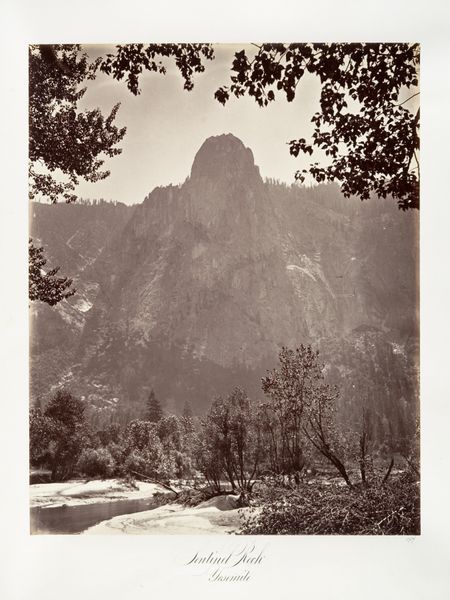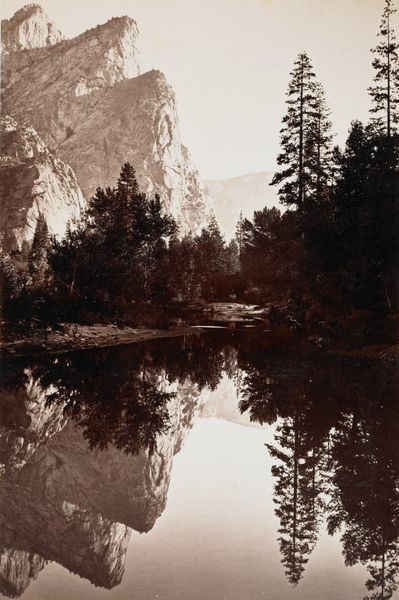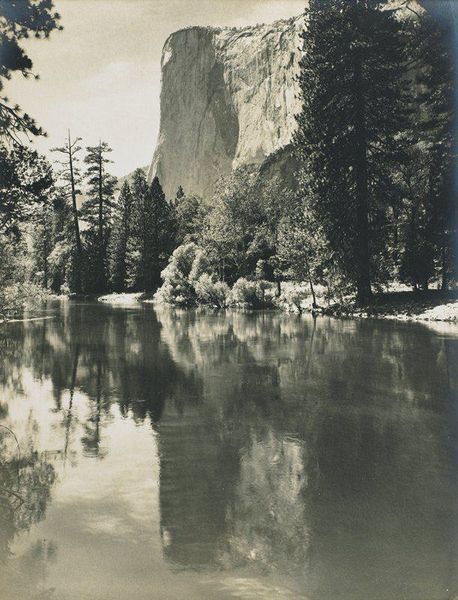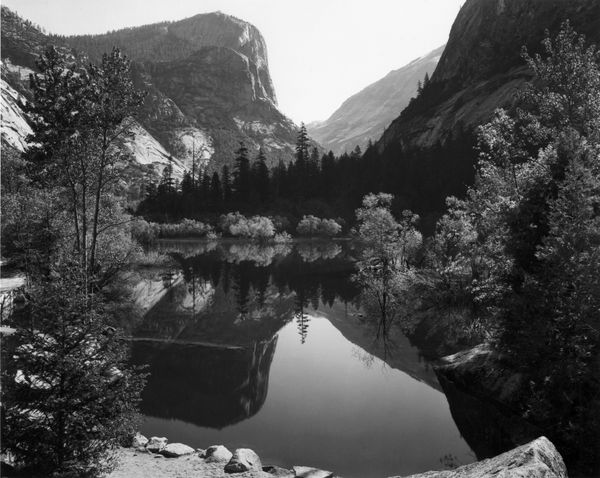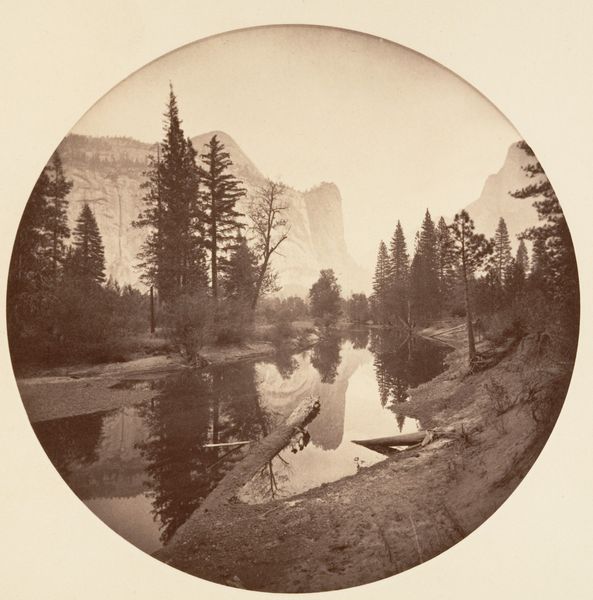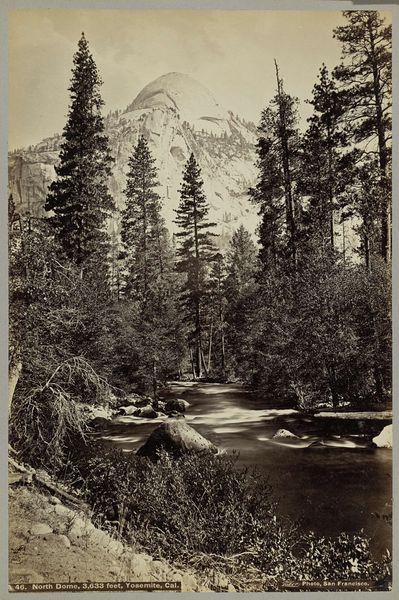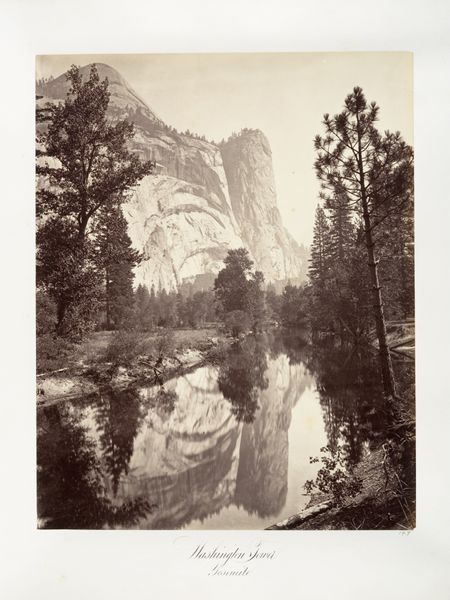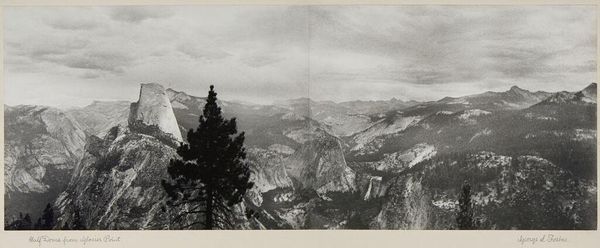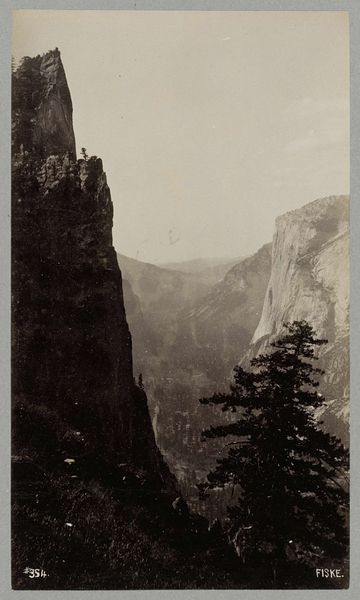
daguerreotype, photography, albumen-print
#
lake
#
natural formation
#
landscape
#
daguerreotype
#
photography
#
mountain
#
hudson-river-school
#
albumen-print
#
realism
Copyright: Public Domain
Curator: What a beautifully serene composition. Looking at this, you’re instantly transported, aren't you? Editor: Absolutely. It feels almost otherworldly. The sepia tones give it this vintage feel, like peering into a half-remembered dream. Curator: Indeed. This albumen print is "Mirror Lake, Yosemite" by Carleton Watkins, taken sometime between 1870 and 1874. It's a superb example of 19th-century American landscape photography. The Hudson River School influence is unmistakable. Editor: Mirror Lake… it certainly lives up to its name. That reflection is just flawless, almost as detailed as the landscape itself. I love how the eye drifts between the real and reflected, questioning which is which. Curator: The mirror image doubles the grandeur, creating a perfect symmetry. The mountain’s imposing presence is balanced by the delicate foliage at the water's edge, each a symbol in their own right. The mountain speaks to permanence and nature's strength, while the foliage symbolizes nature's continuous cycle of renewal and rebirth. Editor: That tension is fascinating. It's also slightly melancholic, don't you think? Knowing the image captures a moment, a specific light that will never be again. It evokes the passing of time. Like a whisper. Curator: I see that. But also remember that these images played a pivotal role in conservation. Watkins' photographs helped convince Congress to protect Yosemite as a national park. So they represent not just loss, but a turning point. Editor: That shifts everything. It’s a potent reminder that art can incite change. And that something beautiful can be rescued from potential destruction. It gives the reflection more weight. Curator: Precisely. Watkins’ choice of vantage point and his masterful use of light truly capture the sublime essence of Yosemite. The symbolism inherent in these landscapes provided spiritual succor and a sense of national pride. Editor: I’ll admit, knowing its influence, and seeing how well its made me contemplate nature... the photo’s transformed for me. It felt like nostalgia before but it feels like resilience and the importance of memory. Curator: Well, I think that’s a wonderful takeaway. Photography's power to shape our understanding of both the natural world and our place within it endures thanks to art like this. Editor: Definitely. It has transformed how I appreciate the scene—now I wish to experience and protect more than just capture moments.
Comments
No comments
Be the first to comment and join the conversation on the ultimate creative platform.
